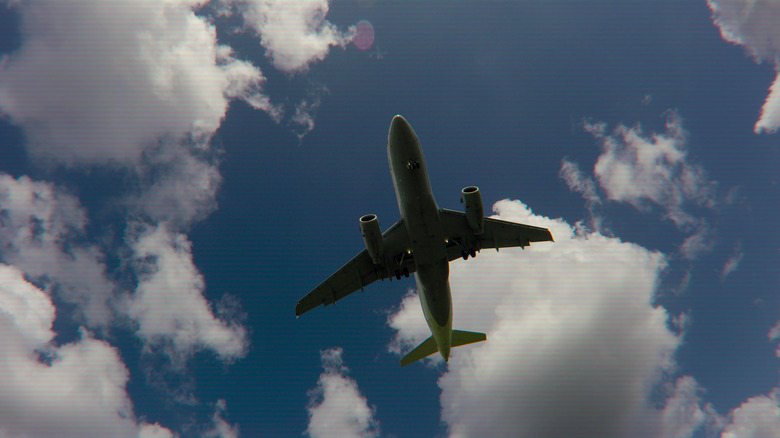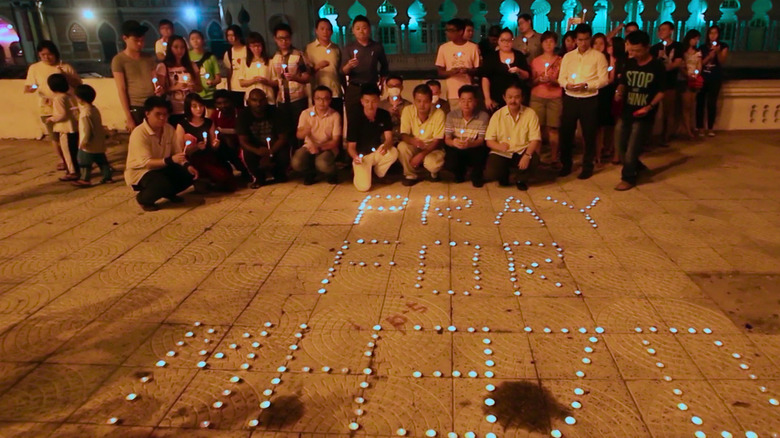How Accurate Is Netflix's MH370: The Plane That Disappeared?
The disappearance of 2014's Malaysian flight MH370 has made its way into the list of other great, unsolved mysteries of the world, such as what happened to the 10-person crew of the Mary Celeste in 1872, or what exactly happened to Amelia Earhart and her co-pilot Fred Noonan when they disappeared on their round-the-world flight in 1937. Nine years since MH370 seemingly vanished into thin air, families of the 239 people on board as well as the aviation department and mystery enthusiasts are still coming up with theories as to what could've happened.
After the right wing flaperon was found eight months later on July 29, 2015, hope grew that officials would find the rest of the plane and finally begin to piece together what had happened. Over the next 18 months, more pieces of plane debris were discovered, with three pieces definitely coming from MH370, and 17 more "likely" coming from the plane (via Britannica). In January 2017, Malaysia, Australia, and China governments ended their searches for more plane debris, with officials still unable to determine exactly what had occurred on the plane. The Malaysian government's official report in 2018 said they determined that the autopilot had been turned off, and the plane had been deliberately flown out into the Indian Ocean (via news.com.au). But the "why" had never been answered.
With Netflix having a pretty good reputation for their documentaries, the release of "MH370: The Plane That Disappeared" has many wondering how accurate it really is.
The documentary accurately covers the missing MH370
While the three-part "MH370: The Plane That Disappeared" is definitely sensationalist at times, highlighting the many theories regarding the plane's disappearance, that's in line with other Netflix documentaries, such as 2021's "Seaspiracy." After all, Netflix wants to get as many viewers watching as possible, so throwing in some of the more far-fetched conjectures is inevitable. But despite this, the documentary is extremely accurate, detailing what began as a seemingly run-of-the-mill flight heading from Kuala Lumpur to Beijing, China. There are interviews with family members of the passengers and crew, and we feel compassion for the people who are disappointed that the search for answers has essentially ended. Those who lost loved ones are still hoping for peace of mind.
The last communication with MH370 was when pilot Zaharie Ahmad said "Good night, Malaysia 370" to the Malaysian air traffic controllers before communication was transferred to the Vietnamese as the plane flew towards Vietnam. A minute and a half later, all radar contact with the flight vanished, along with the 239 people onboard. Aviation journalist Jeff Wise, who is featured in the docu-series, is a proponent of the theory that Ahmad essentially "stole" the plane and flew it into the Indian Ocean. But even he admits there's no definite conclusion, telling WGN that "the thing to know about this case is, the deeper you get, the more closely you look at the evidence and understand the science and mathematics of it, the stranger it gets."

